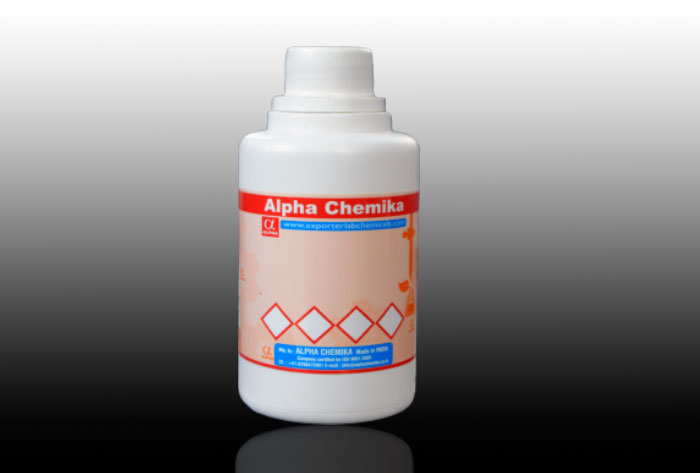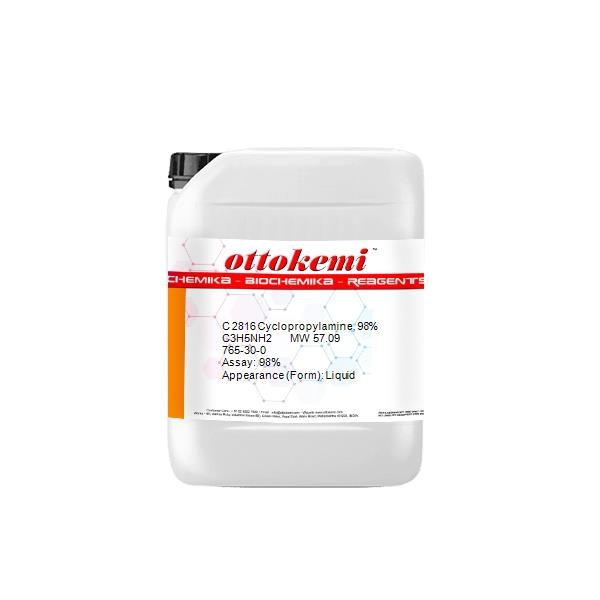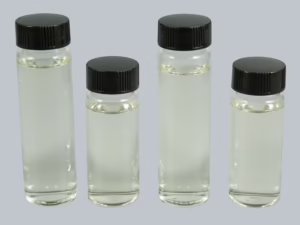Description
Cyclopropylamine: A Small Ring with Big Potential
Cyclopropylamine, a cyclic amine featuring a nitrogen atom attached to a cyclopropane ring, might seem like a niche chemical compound. However, its unique structure and reactivity make it a valuable building block in various scientific and industrial applications. This article delves into the properties, synthesis, and uses of cyclopropylamine, highlighting its importance in organic chemistry and beyond.
Unique Structure, Unique Properties:
The presence of the strained cyclopropane ring gives cyclopropylamine distinct characteristics compared to its acyclic counterparts. This strain contributes to increased reactivity, making it a versatile reagent in organic synthesis. Some key properties include:
- Basicity: Similar to other amines, cyclopropylamine is basic and can accept protons. However, the cyclopropane ring influences its basicity compared to acyclic amines.
- Reactivity: The reactivity of cyclopropylamine stems from the strained ring and the presence of the amine group. It undergoes various reactions like acylation, alkylation, and diazonium formation.
- Chirality: While cyclopropylamine itself is achiral, substitutions on the cyclopropane ring can generate chiral derivatives, making it useful in asymmetric synthesis.
Synthesizing Cyclopropylamine:
Several synthetic routes can achieve the production of cyclopropylamine. Some common methods include:
- Gabriel Synthesis: This classic method involves the reaction of cyclopropane derivatives with potassium phthalimide, followed by hydrolysis to release the amine.
- Reduction of Cyclopropyl Nitriles: Cyclopropyl nitriles can be reduced using various reducing agents, such as lithium aluminum hydride, to yield cyclopropylamine.
- Curtius Rearrangement: This reaction involves the rearrangement of an acyl azide to an isocyanate, followed by hydrolysis to form the amine.
- Ritter Reaction: Reacting cyclopropane derivatives with nitriles in the presence of a strong acid can also lead to cyclopropylamine derivatives.
Diverse Applications:
Cyclopropylamine and its derivatives have found applications in diverse fields, including:
- Pharmaceutical Industry: Cyclopropylamine is a valuable building block in the synthesis of various pharmaceutical compounds. Its incorporation into drug molecules can influence their biological activity and pharmacokinetic properties. Cyclopropylamine moieties have been found in drugs targeting neurological disorders, cardiovascular conditions, and infectious diseases.
- Agrochemicals: The cyclopropyl ring is a common motif in agrochemicals, and cyclopropylamine derivatives can be used as intermediates in the synthesis of pesticides, herbicides, and fungicides.
- Materials Science: Cyclopropylamine can be incorporated into polymers and other materials to modify their properties. For example, it can be used to introduce crosslinking or to enhance the adhesion of coatings.
- Organic Synthesis: As mentioned earlier, cyclopropylamine’s reactivity makes it a useful reagent in organic synthesis. It can be used to synthesize various cyclic and acyclic compounds.
Future Directions:
Research involving cyclopropylamine continues to explore its potential in various fields. Specific areas of interest include:
- Developing new synthetic methods for cyclopropylamine derivatives: This includes exploring more efficient and sustainable routes to access these compounds.
- Investigating the influence of cyclopropylamine substituents on biological activity: Understanding how different substituents affect the activity of drugs containing the cyclopropylamine moiety can lead to the development of more effective therapies.
- Exploring new applications of cyclopropylamine in materials science: This includes investigating its use in the development of new polymers, coatings, and adhesives.
Conclusion:
Cyclopropylamine, despite its simple structure, is a powerful and versatile compound with significant potential in various scientific and industrial applications. Its unique properties make it a valuable building block in organic synthesis, pharmaceutical chemistry, agrochemistry, and materials science. Ongoing research promises to unlock even more uses for this fascinating cyclic amine. As chemists continue to explore its properties and applications, cyclopropylamine is poised to play an increasingly important role in shaping the future of chemistry and related fields.











Reviews
There are no reviews yet.